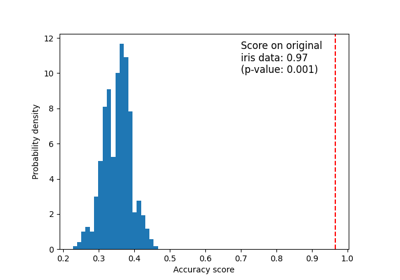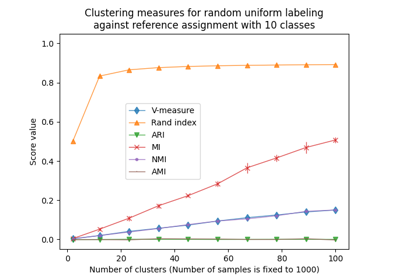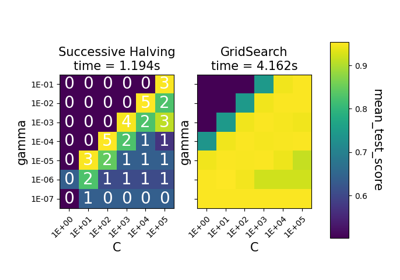备注
Go to the end 下载完整的示例代码。或者通过浏览器中的MysterLite或Binder运行此示例
F检验与互信息的比较#
此示例说明了单变量F检验统计量和互信息之间的差异。
我们考虑3个特征x_1,x_2,x_3均匀分布在 [0, 1] ,目标取决于他们如下:
y = x_1 + sin(6 * pi * x_2)+ 0.1 * N(0,1),即第三个特征完全无关。
下面的代码绘制了y对单个x_i的依赖性以及单变量F测试统计量和互信息的标准化值。
由于F测试仅捕捉线性相关性,因此它将x_1评为最具区分性的特征。另一方面,互信息可以捕捉变量之间的任何类型的依赖性,并且它将x_2评为最具区分性的特征,这可能更符合我们对这个例子的直觉。两种方法都正确地将x_3标记为不相关。

# Authors: The scikit-learn developers
# SPDX-License-Identifier: BSD-3-Clause
import matplotlib.pyplot as plt
import numpy as np
from sklearn.feature_selection import f_regression, mutual_info_regression
np.random.seed(0)
X = np.random.rand(1000, 3)
y = X[:, 0] + np.sin(6 * np.pi * X[:, 1]) + 0.1 * np.random.randn(1000)
f_test, _ = f_regression(X, y)
f_test /= np.max(f_test)
mi = mutual_info_regression(X, y)
mi /= np.max(mi)
plt.figure(figsize=(15, 5))
for i in range(3):
plt.subplot(1, 3, i + 1)
plt.scatter(X[:, i], y, edgecolor="black", s=20)
plt.xlabel("$x_{}$".format(i + 1), fontsize=14)
if i == 0:
plt.ylabel("$y$", fontsize=14)
plt.title("F-test={:.2f}, MI={:.2f}".format(f_test[i], mi[i]), fontsize=16)
plt.show()
Total running time of the script: (0分0.168秒)
相关实例
Gallery generated by Sphinx-Gallery <https://sphinx-gallery.github.io> _




